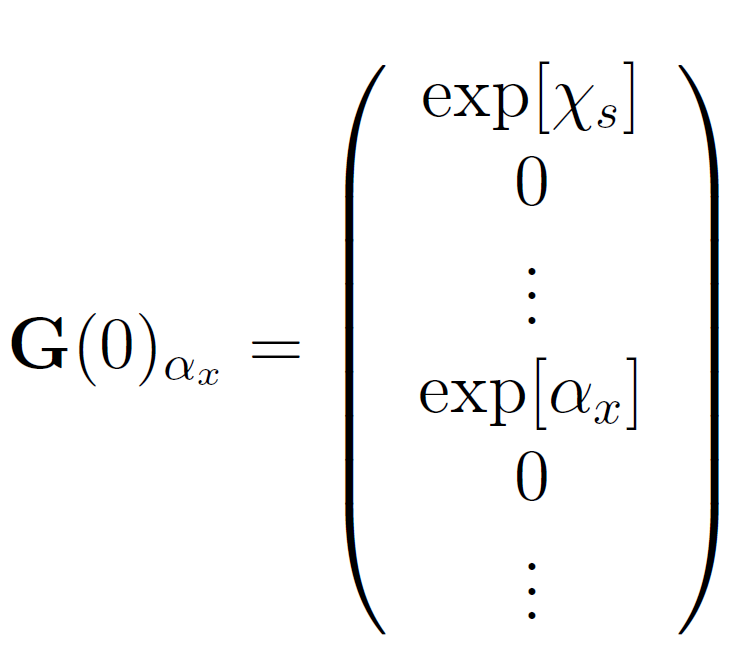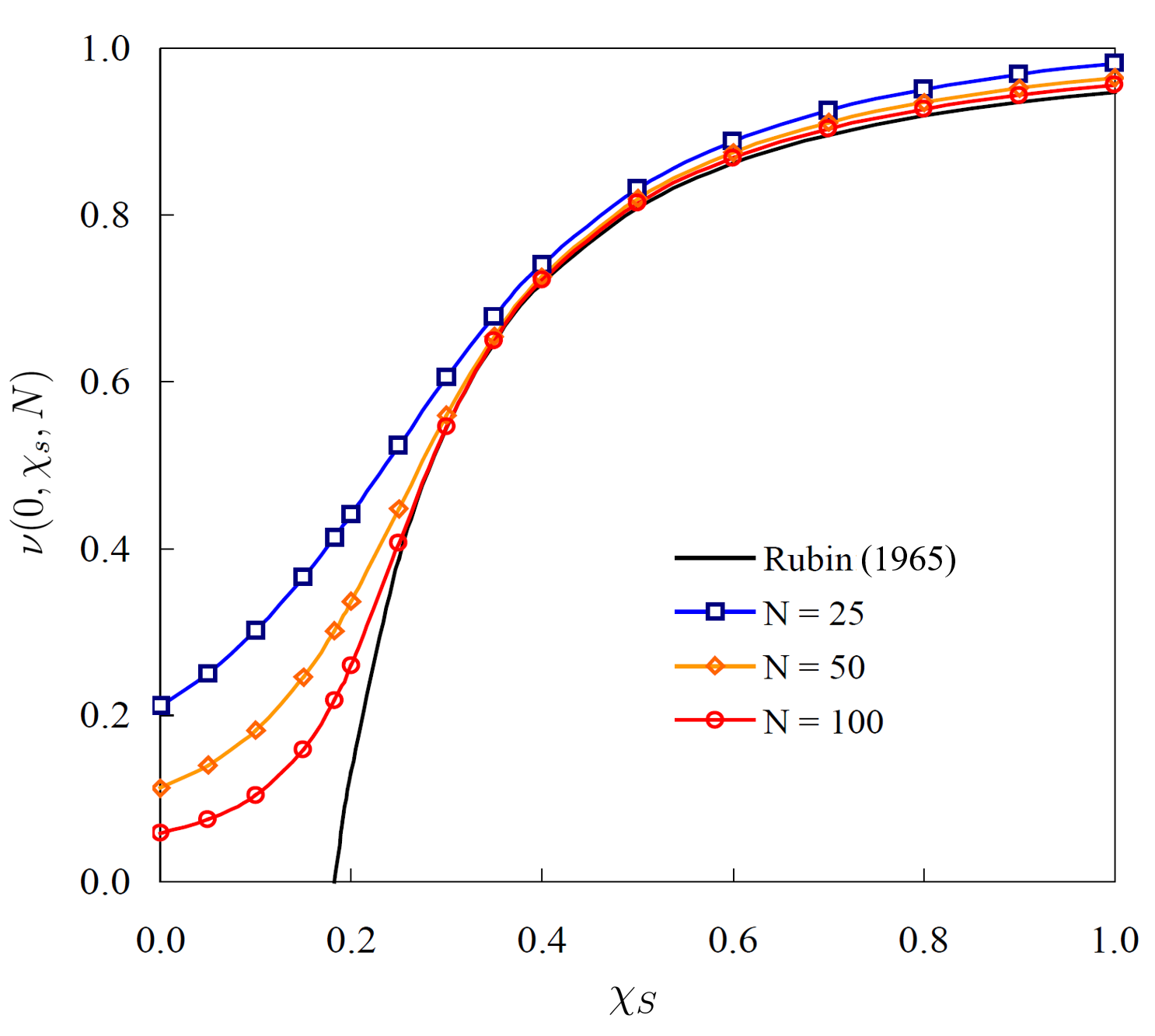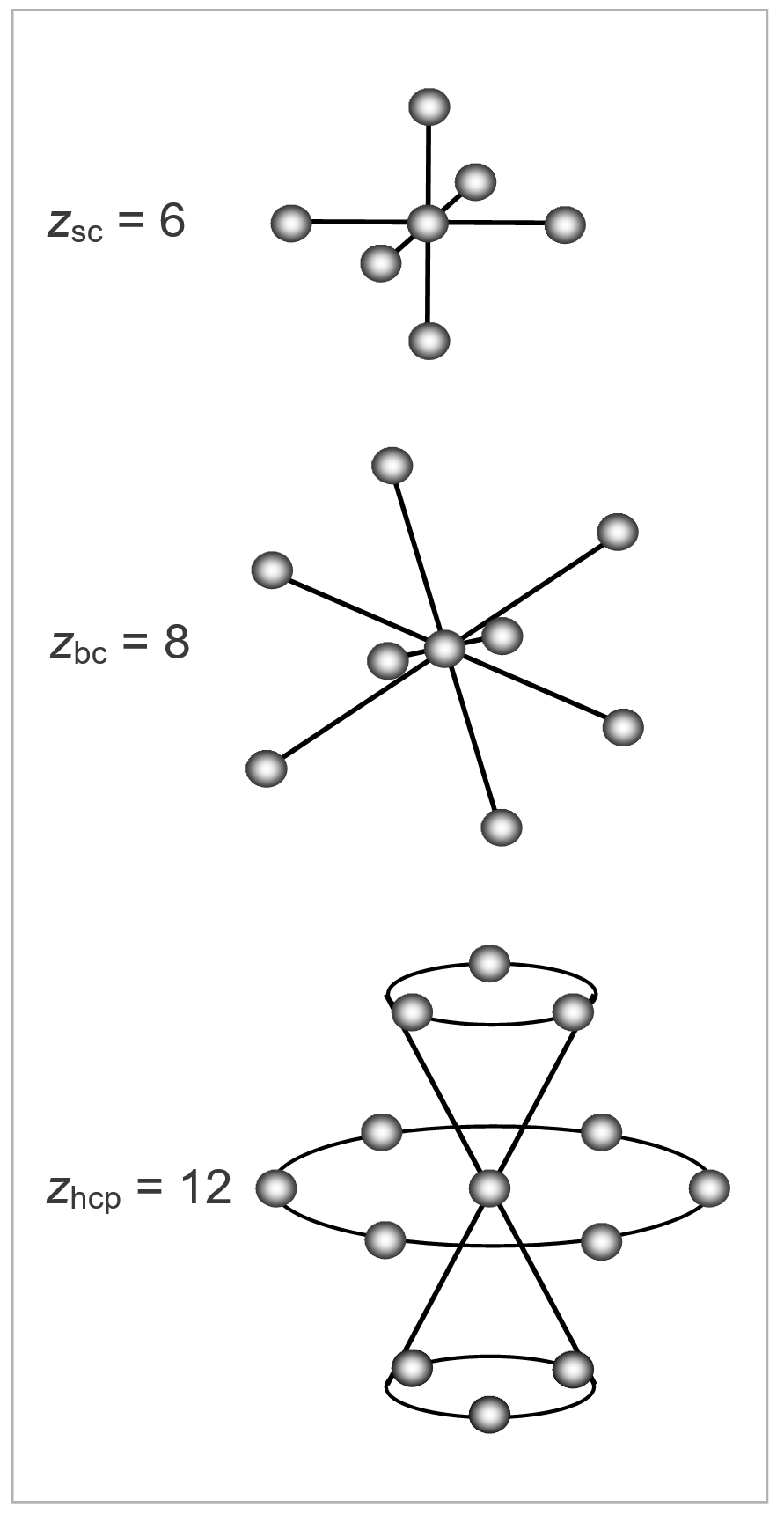Transition Matrix Method
for Polymers Confined to a
Lattice, Part 2
The behavior of polymers in solution and at interfaces is of great importance, both from a theoretical point of view and for practical applications.
In many cases, the polymers are modeled as
quasi-crystalline lattice chains.1-7
As has been shown in part 1, many statistical properties of confined lattice polymer chains may be calculated from the end segment probabilties, G(N, i), using a transition matrix formalism originally developed by DiMarzio and Roe.3,4 For example, the conformational partition function QN+1 of a lattice polymer is given by
![]()
where UT is the row vector (1, 1, ... 1), G(N) is the column vector of all end segment probabilities, G(N,i), and W is the transition probability matrix. With these functions and the methods of statistical physics many other mean conformational properties can be calculated. For example, the mean position of the last segment is given by
![]()
and the density distribution of the last repeat unit
![]()
here M is the layer vector (0, 1l, 2l,...,Ml), and
Ex is the unitvector (0, ...0, 1, 0,..., 0).
The mean number of steps ν(0,χs,N) in the surface layer of an
N-step walk can be calculated from3

In this equation, the function eχs serves as a counting variable under the operation d/dχs. The average number of steps in the other layers can be calculated in a similar way, if we modify the recurrence equations as follows:

where the counting variable αx is assumed to be infinitesimal small. The analogous expression for ν(0,χs,N) is

G(0)αx is a modified starting vector:

In the case of not too large N, the expressions above can be easily evaluated on a computer. By performing the differentiation we obtain

where G(N-s,x) is the (N-s)th component of WN-sG(0) and Ex the (N-s)th unit vector. The components of G(s,x) are easily evaluated and summed. The results depend on the chosen lattice. The lattice parameters of some of the most common lattices are listed in the Table below.
Lattice Parameters of some Common Lattices

As has been shown by DiMarzio, Guttman and Mah4, the matrix method can also be applied to other polymer architectures than homopolymer such as stars and (random or block) copolymers. For example, in the case of an AB-copolymer, the only change is that the matrices WA and WB in the equations above appear as a product in the same sequence as in the copolymer. For example, suppose there are r - s A-type monomers followed by s B-type and that this sequence is repeated N times in the polymer chain, the conformational partition function reads
![]()
where the matrices WA and WB are alike except that χs,A replaces χs,B. The extension to random copolymers is quite obvious. If the polymer has the exact sequence AABAB..., then the partition function of the polymer is
![]()
In the case of star polymers with f branches, the partition function QN+1 is somewhat more complicated. Let Q(i; m; Na,i) be the partition function of the ith branch, which consists of Na,i segments and starts in the mth layer, then the partition function of the whole star-shaped polymer chain is given by4

Again, each arm can be a homopolymer, copolymer or any other polymer. The partition function in all these cases can be calculated with the equations above.
Mean Number of Units in the Surface Layer

The Figure above shows the mean number of repeat units
in the interface layer as a function of chain length N and adsorption parameter χs. The curves have been calculated
with the lattice parameters of the simple cubic lattice: z = 6, λ0 = 2/3, and λ1
= 1/6. As can be seen from the curves, for long linear lattice
chains and large adsorption parameters (χs > χs,c),
the fraction of adsorbed repeat units, ν(0,χs,N), is nearly independent of the chain length N,
whereas for weak adsorption, it depends strongly on the chain
length.
References & Notes
- P. J. Flory, J. Chem. Phys. 9, 660 (1941); 10, 51 (1942)
- M. L. Huggins, J. Phys. Chem. 46, 151 (1942); J. Am. Chem. Soc. 64, 1712 (1942)
- R. J. Rubin, J. Chem. Phys., 43, 2392 (1965)
- E. A. DiMarzio and R. J. Rubin, J. Chem. Phys., 55, 4318 (1971)
- E.A. Di Marzio, C.M. Guttman, A. Mah, Macromolecules 28, 2930 (1995)
- R. J. Roe, J. Chem. Phys., 60, 4192 (1974)
- J. M. H. M. Scheutjens & G. J. Fleer, J. Phys. Chem. 83, 1620 (1979) & 84, 178 (1980)
The matrix procedure, developed by Rubin and DiMarzio,3-4 is only applicable to lattice polymers in the theta state.9 For all other cases, the matrix has to be modified to incorporate the effects of monomer-solvent interaction and excluded volume in each layer. This problem has been solved by Roe (1974)6 and Fleer and Scheutjens (1979).7
